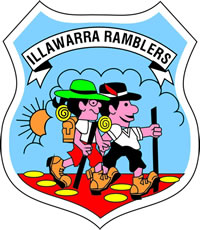First Aid kits should not just be the responsibility of the leaders. It is important that all members have their own kit in case of emergencies. On one of my walks a member of our group was bitten by an insect and her leg started to react. This reminded me to put some antihistamines in my kit. It is a good idea to check your First Aid Kit at regular intervals to see if everything is included and is in date. What you include depends very much on the activity itself and how much you can carry. This is our list from the Ramblers’ website
-
- Triangular bandage
- Saline solution
- Gauze
- Non-stick dressings
- Crepe bandage roll
- Adhesive bandages/strips
 Gloves (in plastic zip lock bag)
Gloves (in plastic zip lock bag)- Alcohol wipes
- Space blanket
- Scissors
- Tweezers
- Steri strips
- Aspirin*
- Setopress bandage (for snake bites)
*An outcome of a Ramblers Club incident was that if any chest pain is experienced, 300mg aspirin should be given (to be chewed not swallowed) and an ambulance called immediately. Aspirin thins the blood and will help alleviate symptoms and minimise damage if there are potential heart issues until proper medical evaluation can occur. Note: Other blood thinners already being taken, eg Warfarin, should be taken into account.
There are several apps available to help with information to handle the most common emergencies eg First Aid – Australian Red Cross
Also, as we are coming into the warmer months it is a good idea to check your knowledge on how to give first aid for snake bites!
Here is one other list for a personal First Aid kit –
- Pressure immobilisation bandages
- Compression bandages
- Snake Bite Bandage
- Regular roller bandages
- Triangular bandage for breaks
- Gauze or cotton pads for wounds
- Assorted bandaids for blisters and cuts
- Ointment for insect bites
- Antiseptic cream
- Saline solution
- Soluble pain relievers- preferably Aspirin
- Antihistamine
- Insect repellent
- Salt, for leeches
- Matches
- Tweezers and splinter needles
- Small scissors or nail clippers
